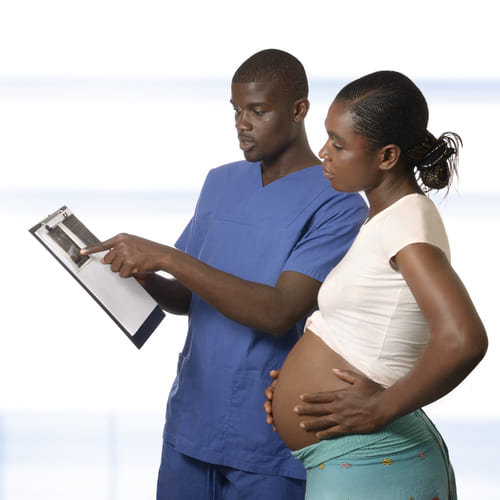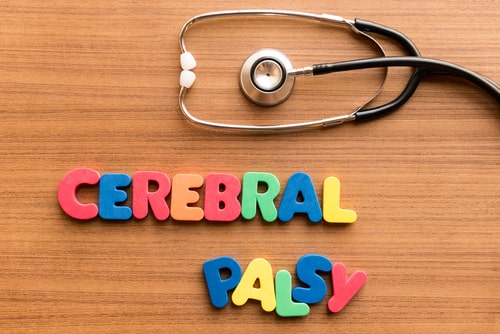Chicago, IL 60601
FREE CONSULTATIONS 312-462-4200
TOLL FREE 833-462-4200
Recent Blog Posts
Could My Doctor Be Responsible for My Miscarriage?
 A miscarriage can be a horrible experience for anyone to go through. Often, a woman who miscarries feels tremendous sadness and trauma as well as harsh physical pain. As awareness has increased, the general population now realizes more than ever before how common miscarriages are, but that does not make it any less painful. Beyond the physical and emotional pain that might improve with time, miscarrying can also be connected with other medical complications in the future.
A miscarriage can be a horrible experience for anyone to go through. Often, a woman who miscarries feels tremendous sadness and trauma as well as harsh physical pain. As awareness has increased, the general population now realizes more than ever before how common miscarriages are, but that does not make it any less painful. Beyond the physical and emotional pain that might improve with time, miscarrying can also be connected with other medical complications in the future.
Since they can cause so much pain and suffering, women who miscarry sometimes find themselves asking who is to blame. While holding a negligent caretaker responsible will never undo the miscarriage, it can certainly help cover your associated medical bills and other expenses over the next few months as you focus on your physical and mental recovery. If you think a doctor’s negligence led to your miscarriage, speak with a qualified Chicago, IL birth injury attorney about legal avenues you might pursue.
Early Intervention Services for Children with Cerebral Palsy in Illinois
 When a child is diagnosed with cerebral palsy, early intervention services play a crucial role in their development and quality of life. In Illinois, families of children with cerebral palsy must understand the legal options available that can make a significant difference in ensuring that children receive the support they need to thrive. If your child was diagnosed with cerebral palsy, contact a birth injury attorney to learn about the legal options that may be available to maximize your child’s quality of life and help them in their development moving forward.
When a child is diagnosed with cerebral palsy, early intervention services play a crucial role in their development and quality of life. In Illinois, families of children with cerebral palsy must understand the legal options available that can make a significant difference in ensuring that children receive the support they need to thrive. If your child was diagnosed with cerebral palsy, contact a birth injury attorney to learn about the legal options that may be available to maximize your child’s quality of life and help them in their development moving forward.
At Birth Injury Law Alliance, Ltd., we provide compassionate legal assistance to families that have a child who experienced a birth injury such as cerebral palsy. Attorney Schwartz has an impressive legal track record, which features multi-million-dollar verdicts and settlements on behalf of children suffering from birth injuries like cerebral palsy. Families can trust that when they retain our legal services, we will provide the most aggressive legal representation available to ensure your child has every opportunity to thrive and prosper to the greatest extent possible.
4 Symptoms of Cerebral Palsy From a Birth Injury
 Cerebral palsy is a serious birth injury that is known to impact movement, muscle tone, posture, and learning ability. Cerebral palsy is caused by damage to the developing brain, usually before or during birth, but parents and caregivers may not notice that something is amiss with their child for several months or even years.
Cerebral palsy is a serious birth injury that is known to impact movement, muscle tone, posture, and learning ability. Cerebral palsy is caused by damage to the developing brain, usually before or during birth, but parents and caregivers may not notice that something is amiss with their child for several months or even years.
Understanding the symptoms of cerebral palsy is crucial for early detection and intervention to improve the quality of life for individuals with this condition. Parents who suspect their child may have cerebral palsy should contact a professional right away. If your child suffered a birth injury and has since been diagnosed with cerebral palsy, you may have legal options you need to be aware of. Contact a lawyer to get the assistance you require.
Unusual Muscle Tone
One of the primary symptoms of cerebral palsy is abnormal muscle tone. This can manifest as either too much or too little muscle tone. Too much muscle tone can cause stiffness and rigidity in the muscles, making movement difficult. At the same time, too little muscle tone can result in floppy or limp muscles, affecting coordination and control.
Medical Negligence That Can Lead to Birth Injuries in Illinois
 Birth injuries can have devastating and lifelong consequences for both the child and her family. In Illinois, medical negligence during childbirth can result in various types of birth injuries, with cerebral palsy being one of the most serious and prevalent conditions. If you, your child, or both of you suffered injuries during the childbirth process and you believe medical negligence may be to blame, contact a lawyer to secure the legal representation you need during this stressful time.
Birth injuries can have devastating and lifelong consequences for both the child and her family. In Illinois, medical negligence during childbirth can result in various types of birth injuries, with cerebral palsy being one of the most serious and prevalent conditions. If you, your child, or both of you suffered injuries during the childbirth process and you believe medical negligence may be to blame, contact a lawyer to secure the legal representation you need during this stressful time.
At Birth Injury Law Alliance, Ltd., Attorney Allen Schwartz has a proven track record of obtaining multiple multi-million dollar verdicts and settlements on behalf of his clients. When you need legal help regarding a birth injury, there is no better way to protect your rights than obtaining high-quality legal guidance.
Types of Medical Negligence in Illinois Birth Injury Cases
-
Failure to monitor fetal distress – One common type of medical negligence that can lead to birth injuries, including cerebral palsy, is the failure to monitor fetal distress during labor and delivery. Proper monitoring of the fetal heart rate and other vital signs is crucial in identifying signs of distress and taking timely action to prevent potential birth complications.
Surgical Interventions for Addressing Birth Injuries: What You Need to Know in Illinois
 Birth injuries can be a very emotional experience for families. In Illinois, surgical interventions are often necessary to address these injuries and provide the best possible outcome for the mother and child. Understanding the types of surgical interventions available and what to expect can help families navigate this difficult time with confidence. If you or your child has suffered a birth injury, contact an experienced attorney who can bear the burden of the legal side of your injury while you help your family recover.
Birth injuries can be a very emotional experience for families. In Illinois, surgical interventions are often necessary to address these injuries and provide the best possible outcome for the mother and child. Understanding the types of surgical interventions available and what to expect can help families navigate this difficult time with confidence. If you or your child has suffered a birth injury, contact an experienced attorney who can bear the burden of the legal side of your injury while you help your family recover.
Most Common Forms of Surgical Intervention for Birth Injuries
A cesarean section (C-section) is arguably the most common form of surgical intervention for birth injuries. A C-section may be recommended if there are complications during labor or if the baby is in distress. This surgical procedure involves making an incision in the mother’s abdomen and uterus to deliver the baby safely. While a C-section is a major surgery, it is generally safe and can help prevent further injury to the baby during birth.
Birth Injury Risks Involving Prolonged Labor in Illinois
 Prolonged labor, also known as prolonged or arrested labor, can pose significant risks to both the mother and the baby during childbirth. This condition occurs when labor lasts longer than usual, leading to various complications that can result in serious birth injuries. It is crucial for expectant mothers and healthcare providers to be aware of these risks and take necessary precautions to ensure safe delivery. If you or your baby was injured due to prolonged delivery, experienced attorneys can ensure you receive the legal guidance you need to pursue a positive conclusion to your case.
Prolonged labor, also known as prolonged or arrested labor, can pose significant risks to both the mother and the baby during childbirth. This condition occurs when labor lasts longer than usual, leading to various complications that can result in serious birth injuries. It is crucial for expectant mothers and healthcare providers to be aware of these risks and take necessary precautions to ensure safe delivery. If you or your baby was injured due to prolonged delivery, experienced attorneys can ensure you receive the legal guidance you need to pursue a positive conclusion to your case.
Here are the Major Risks of Prolonged Labor
One of the most serious risks associated with prolonged labor is fetal asphyxia, a condition in which the baby is deprived of oxygen during the birthing process. This can occur due to compression of the umbilical cord or other factors that impede the flow of oxygen to the baby. Fetal asphyxia can lead to serious complications such as brain damage, developmental delays, and even death if not immediately addressed.
Common Types of Birth Injuries and Their Causes
 Birth injuries are a devastating reality for many families, with long-lasting consequences for both the child and the parents. These injuries can occur due to a variety of reasons, ranging from medical negligence to unforeseen complications during childbirth. If a birth injury has affected you and your family and you want answers, contact an experienced lawyer to get the high-quality legal assistance you need.
Birth injuries are a devastating reality for many families, with long-lasting consequences for both the child and the parents. These injuries can occur due to a variety of reasons, ranging from medical negligence to unforeseen complications during childbirth. If a birth injury has affected you and your family and you want answers, contact an experienced lawyer to get the high-quality legal assistance you need.
Here Are the Birth Injuries You Need to Know About
Among the most common birth injuries is cerebral palsy, a group of disorders that affect a child’s movement and muscle coordination. Cerebral palsy can be caused by oxygen deprivation during birth, which may occur due to complications such as umbilical cord compression or placental abruption. In some cases, medical negligence, such as failure to monitor fetal distress or improper use of delivery instruments, can also contribute to the development of cerebral palsy.
My Child Has Cerebral Palsy. Can a Birth Injury Lawyer Help?
 Discovering that your child has cerebral palsy can be devastating for any parent. If you suspect a birth injury caused your child’s condition, it is crucial to understand your legal rights and options. While this may seem like an overwhelming time as you look for answers regarding your beloved child’s condition, a compassionate and dedicated attorney can provide the essential legal assistance you and your family need to get answers and move on a path in the right direction.
Discovering that your child has cerebral palsy can be devastating for any parent. If you suspect a birth injury caused your child’s condition, it is crucial to understand your legal rights and options. While this may seem like an overwhelming time as you look for answers regarding your beloved child’s condition, a compassionate and dedicated attorney can provide the essential legal assistance you and your family need to get answers and move on a path in the right direction.
Understanding Cerebral Palsy and Birth Injuries
Cerebral palsy is a neurological disorder that affects movement, muscle coordination, and posture. It can be caused by brain damage that occurs before, during, or shortly after birth. Birth injuries, such as oxygen deprivation or trauma during delivery, can contribute to the development of cerebral palsy. If medical negligence or malpractice is suspected as the cause of your child’s condition, consulting a birth injury lawyer can help you determine if you have a valid legal claim.
Cerebral Palsy: Birth Injury or Natural Causes?
 Cerebral Palsy can have several different causes, ranging from natural congenital defects to birth injury caused by a doctor’s negligence. If your child was diagnosed with Cerebral Palsy after birth, determining the cause is important. Finding out whether your child deserves compensation right away can help you file a lawsuit on time or start making a plan for your child’s care. If your child’s condition was caused by a birth injury, there is a chance that a doctor should have been able to prevent it. Telling the difference between congenital and birth injury-induced Cerebral Palsy can be difficult. If you suspect that a doctor’s carelessness may have complicated your birth and potentially led to your child’s diagnosis, you should speak with a qualified Chicago, IL, birth injuries attorney as soon as possible. We may suggest visiting a specialist and filing a lawsuit depending on the results of your visit.
Cerebral Palsy can have several different causes, ranging from natural congenital defects to birth injury caused by a doctor’s negligence. If your child was diagnosed with Cerebral Palsy after birth, determining the cause is important. Finding out whether your child deserves compensation right away can help you file a lawsuit on time or start making a plan for your child’s care. If your child’s condition was caused by a birth injury, there is a chance that a doctor should have been able to prevent it. Telling the difference between congenital and birth injury-induced Cerebral Palsy can be difficult. If you suspect that a doctor’s carelessness may have complicated your birth and potentially led to your child’s diagnosis, you should speak with a qualified Chicago, IL, birth injuries attorney as soon as possible. We may suggest visiting a specialist and filing a lawsuit depending on the results of your visit.
How to Make a Claim for Negligent Uterine Rupture
 Suffering a uterine rupture during labor can be a traumatic, life-threatening event. While these emergencies do sometimes happen spontaneously, many are tragically avoidable with proper medical care. If your healthcare providers failed to meet the standard of care leading up to or during your delivery rupture, you may be able to take legal action with an Illinois birth injury lawyer.
Suffering a uterine rupture during labor can be a traumatic, life-threatening event. While these emergencies do sometimes happen spontaneously, many are tragically avoidable with proper medical care. If your healthcare providers failed to meet the standard of care leading up to or during your delivery rupture, you may be able to take legal action with an Illinois birth injury lawyer.
Proving Negligence
To successfully make a claim for uterine rupture, your attorney will need to prove the elements of negligence. This requires showing that your healthcare provider owed you a duty of care that they subsequently breached in some way, directly causing your injuries.
Your medical team is expected to adhere to the appropriate standard of care for monitoring labor, detecting potential uterine rupture risk factors, and responding urgently when a rupture occurs. Failing to meet this professional standard of competence in any aspect of your care before, during, or after delivery could satisfy the breach of duty criteria. Records will be thoroughly reviewed to pinpoint exactly where the negligent action(s) occurred.





